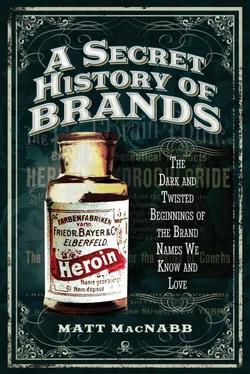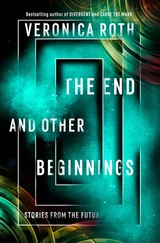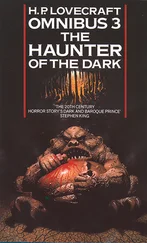The treatments were vast and ever-developing, most of which would be considered rather odd, or even absurd, by today’s standards. One of them included covering the underweight guests with sandbags; another option was rooms that featured tubes and systems to bring in fresh air and expel germs, and a cage that would relax the patient with static electricity. They were all the latest and most innovative treatments of the era.
Dr Kellogg did have a tendency to fixate rather passionately on a number of twisted pursuits however. One of the main focuses he had was his self-declared war on the human colon. He was obsessed to the extent that he actually wrote a 362-page book in 1915 titled Colon Hygiene , in which he explores the functions and possible treatments of the colon, up to and including removal. Kellogg felt passionately about the impurity and spiritual uncleanliness of the organ:
in the treatment of every chronic disease, and most acute maladies, the colon must be reckoned with. That the average colon, in civilized communities, is in a desperately depraved and dangerous condition, can no longer be doubted. The colon must either be removed or reformed.
Kellogg treated thousands of patients at The San over the years, most of them with surgery, referring to it as, ‘a hold of unclean and hateful parasites, a veritable Pandora’s box of disease and degeneracy’. He firmly believed in the unclean nature of the colon:
That most despised and neglected portion of the body, the colon, has in recent years been made the subject of much scientific study and research, with the result that a lively controversy has been stirred up over the question as to whether this organ should be permitted to remain a part of the ‘human form divine,’ or whether it should be cast out as worse than useless and unworthy of place in the anatomy…
Kellogg also firmly believed in the healing power of sunlight. A light machine that Kellogg invented was even showcased at the 1893 Chicago World’s Fair. The machine utilised light bulbs to create heat and light intended to cure various diseases. He also believed that the colour white absorbed the sun, so he consistently wore all white clothing to help him absorb the full benefits that sunlight could offer. He would often utilise an Arc lamp to the scalp or ear as another way to absorb healing light.
Dr Kellogg invented a number of quack medical contraptions, which he was convinced would help his patients at The San. These included the electrotherapy exercise bed, medical slapping-massage machine, two and four person food vibrators, mechanical horses, the infamous Oscillomanipulator and the hot air bath. In fact, The San had an entire Vibro-Mechanical department. Kellogg also found that music inspired people to exercise and eliminated some of the boredom associated with the often tedious process. He even created early workout music recordings on phonograph to help inspire his patients.
Seen as a ‘posh’ medical retreat, The San enjoyed a number of famous patients, including playwright George Bernard Shaw, industrialist Henry Ford, wealthy businessman John D. Rockefeller, owner of the Wall Street Journal C.W. Baron and even a visit in 1927 from famed Olympic swimmer Johnny Weissmuller. Kellogg made good use of Weissmuller’s visit and used him to create shadow-grams that would display his vision of the ideal human physique. Dr Kellogg got Weissmuller to follow a vegetarian diet while he was there and he actually broke one of his own records in the pools at The San pool, lending further legitimacy to Kellogg’s programme.
John Harvey brought his younger brother, William Keith Kellogg, into the Battle Creek Sanitarium to help keep the books and run much of the business end, so he could fully focus on his health ideas and ambitions for The San. William had just recently completed a four-month business course and was the perfect candidate to help John Harvey, because he never really challenged his absolute authority. If you were to work at The San, then you could expect a salary of up to $9 per week. The first-year nurses were treated to room and board, but no salary. This wasn’t an uncommon practice in the nineteenth century. Dr Kellogg felt the honour of working under him was enough compensation. John Harvey boasted that he himself took no salary, assumingly a testament to his dedication to the healthy cause, but the reality is that his speeches and books alone made him wealthy. Employees were also required to forego meat. This isn’t a surprising requirement from the author of Shall We Slay To Eat? Kellogg believed that meat was the cause of many illnesses.
Kellogg was so serious about the health benefits of committing to a life of vegetarianism that he not only required it of his staff, but also of all guests of The San. Often, the patients were unable to commit fully to the programme and snuck away to indulge themselves and eat meat at a nearby restaurant. Dr Kellogg was apparently aware that this would occur and it frustrated him endlessly. The menus at The San included carefully chosen selections such as creamed cauliflower, celery, radishes, yogurt, cheese, stewed raisins, apple pie, bananas, good health biscuits, pineapple sauce and kaffir tea. No salt and sugar were offered as they were considered to be unnecessary and impure.
The daily menu would be printed at the Sanitarium and would include the programme for that day. Here is an example of one such programme, this specific one from 16 November 1927:
7.00 AM Gymnasium – Chest Gymnasics
7.20 AM Parlor – Morning Worship
7.40 to 8.40 AM Breakfast
8.30 to 9.00 AM Gymnasium – Special Class for Women, Folk Dances, etc.
9.00 to 9.30 AM Gymnasium – Drill and March for Men and Women
9.30 to 10.00 AM Gymnasium – Games, Baseball, etc., for men
12.45 to 2.00 PM Dinner
2.00 to 3.00 PM Lobby – Orchestra Concert
3.00 to 4.00 PM Gymnasium – Games, Medical Gymnastics, Volley Ball, etc.
6.00 to 6.45 PM Supper
7.00 PM Gymnasium – Light Gymnastics and Grand March with Music
8.00 PM Parlour – Lecture, Dr W. H. Riley
Kellogg continued to explore his distrust of the human colon by attempting to prove that constipation was a problem that only humans experienced and that it was somehow tied to their consumption of meat. He travelled widely to study animals and found that vegetarian animals would experience frequent bowel movements, so he decided that he would help his human patients to experience the same. Dr Kellogg created the Colonic Irrigation Machine to deal with this problem, which would wash out the digestive tract of the patient with warm water. It was Kellogg’s commitment to changing the diets of his patients that would soon lead to him working to develop his own food alternatives.
Kellogg had all kinds of ideas about not just diet, but also human sexuality, marriage, and life. In 1879, he married Ella Ervilla Eaton; it is said that he enjoyed her intelligence, which is what attracted him to her. He boasted that he and his wife never consummated their marriage, in fact he spent their honeymoon writing a book. Kellogg and his wife would never have biological children of their own; instead they adopted over forty children from all around the world.
There were certainly medical theories in Dr Kellogg’s writing that were profound and ahead of their time, but we are also forced to acknowledge a high level of the absurd in many of the assertions he put forth. Kellogg was convinced, for example, that marriage had a physical affect on a woman. If a woman had children with her second husband, Kellogg asserted that they would more closely resemble the first husband, rather than their biological father. He also believed that if a black woman had a baby with a white man, that all of her subsequent babies would be lighter in skin tone, even if their biological father was a black male. Kellogg also had strong feelings about who should and should not be able to marry; he believed, for example, that a criminal should never marry, neither should someone who is disproportionate in size, has a gap in age between the husband and wife and, to top it all off, he was also against interracial marriage.
Читать дальше












